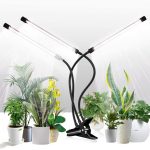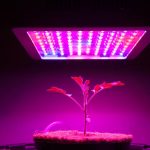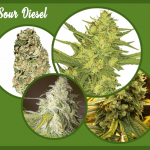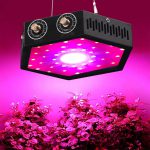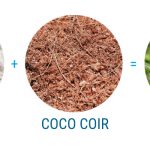Sometimes things can go wrong in your cannabis garden even when you are taking great care of your plants. Even the most experienced cannabis growers can occasionally experience problems and yellow leaves are usually the first sign of trouble. Chlorosis or the yellowing leaves can be caused by incalculable reasons, and this is why growers need to know their causes and potential remedies.
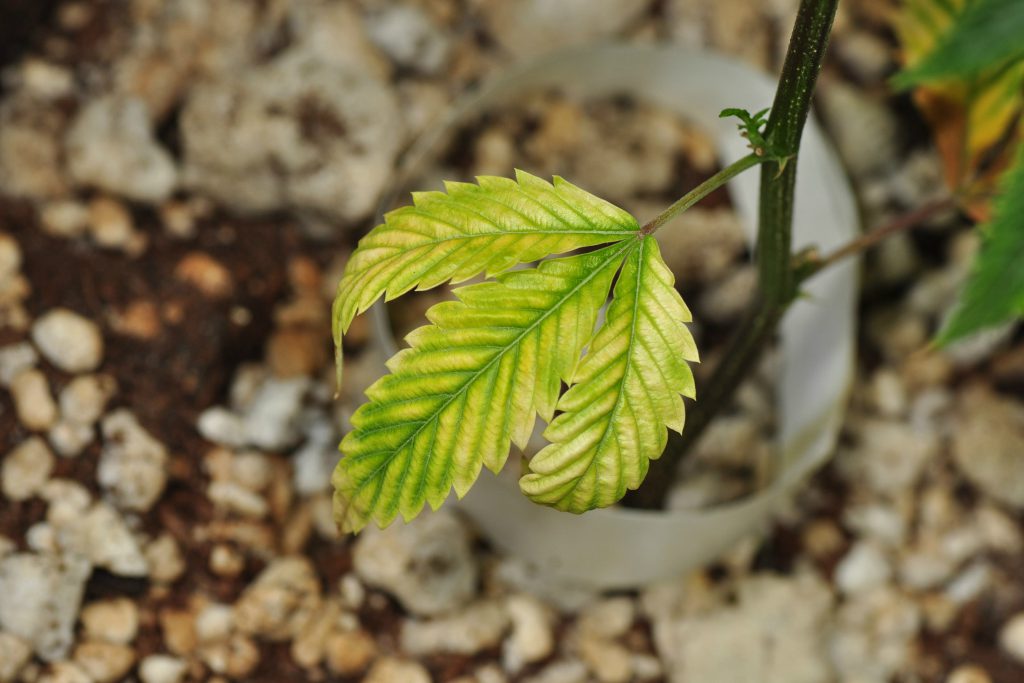
This article delves into the details of yellow leaves in cannabis plants to help you identify the common causes. We have also incorporated some helpful tips for curing affected plants.
Cannabis home growers can use these tips to prevent the leaves of their cannabis plants from turning yellow. Read on to know more about cannabis leaves turning yellow.
Proper Diagnosis of Yellow Leaves on Marijuana Plants
The yellowing of leaves on cannabis plants can be caused by many factors. Growers need to narrow down any possible causes by analyzing the affected plants. You need to first take note of the location of yellow leaves on your cannabis plants. Determine whether the yellow leaves are situated at the bottom of the plant or whether it is only the new leaves that are affected. Here is how you can properly diagnose yellow leaves on cannabis plants.
Lower Leaves Turning Yellow
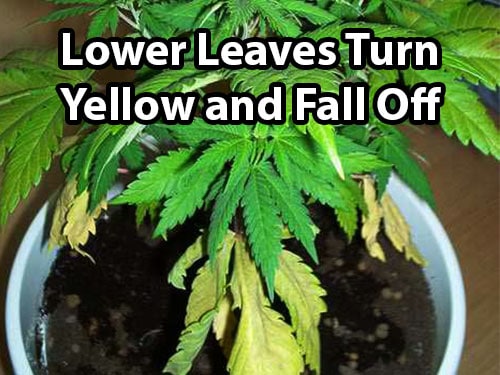
When the lower fan leaves on your plants turn yellow, it can be a sign that your plants are not getting adequate nitrogen. When the cannabis plants have a deficiency, the nitrogen in lower leaves will mobilize to enable new growth. This kind of chlorosis usually starts at the leaf tips and will slowly migrate to the stem.
Marijuana plant roots only absorb nitrogen when conditions are right. Therefore, soil that is extremely wet or dry and incorrect pH can slow down or stop the plants from mobilizing nutrients. If you notice only a few yellow leaves close to the base of the plant, the chlorosis can be a natural process of the plants shedding unwanted leaves.
Chlorosis of New Growth Leaves
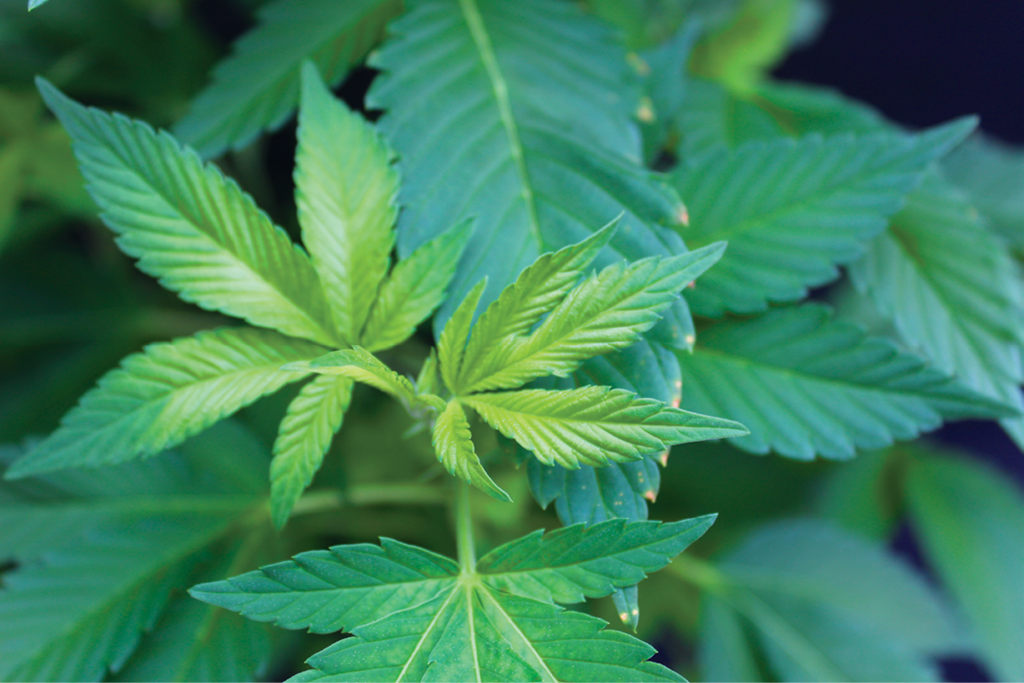
When the uppermost leaves start yellowing, you need to first check for signs of light burn. The tips of new leaves will turn yellow when they are receiving excessive heat from grow lights. You should place your hand on the upper most leaves and if they get hot or warm, then it means the lights are very close.
If the yellowing is not caused by light burn, then it can be because of nutrients deficiency such as iron. Iron is considered an immobile nutrient, unlike nitrogen. Once iron has been absorbed by cannabis plants, it usually stays where it is. As a result, new growth leaves will not get iron and they will eventually turn yellow. When the yellowing is at the beginning of flowers, then it can be because of magnesium or calcium deficiency and the yellow can quickly clear up when you supplement calcium or magnesium.
Yellowing of Cannabis Seedling Leaves
If the leaves on your cannabis sprout or seedlings are yellowing, then this is not a nutritional problem. Seeds are packed with nutrients and energy and will grow healthy for a few weeks. Your seedlings may be turning yellow because of a lack of adequate light or bad watering habits.
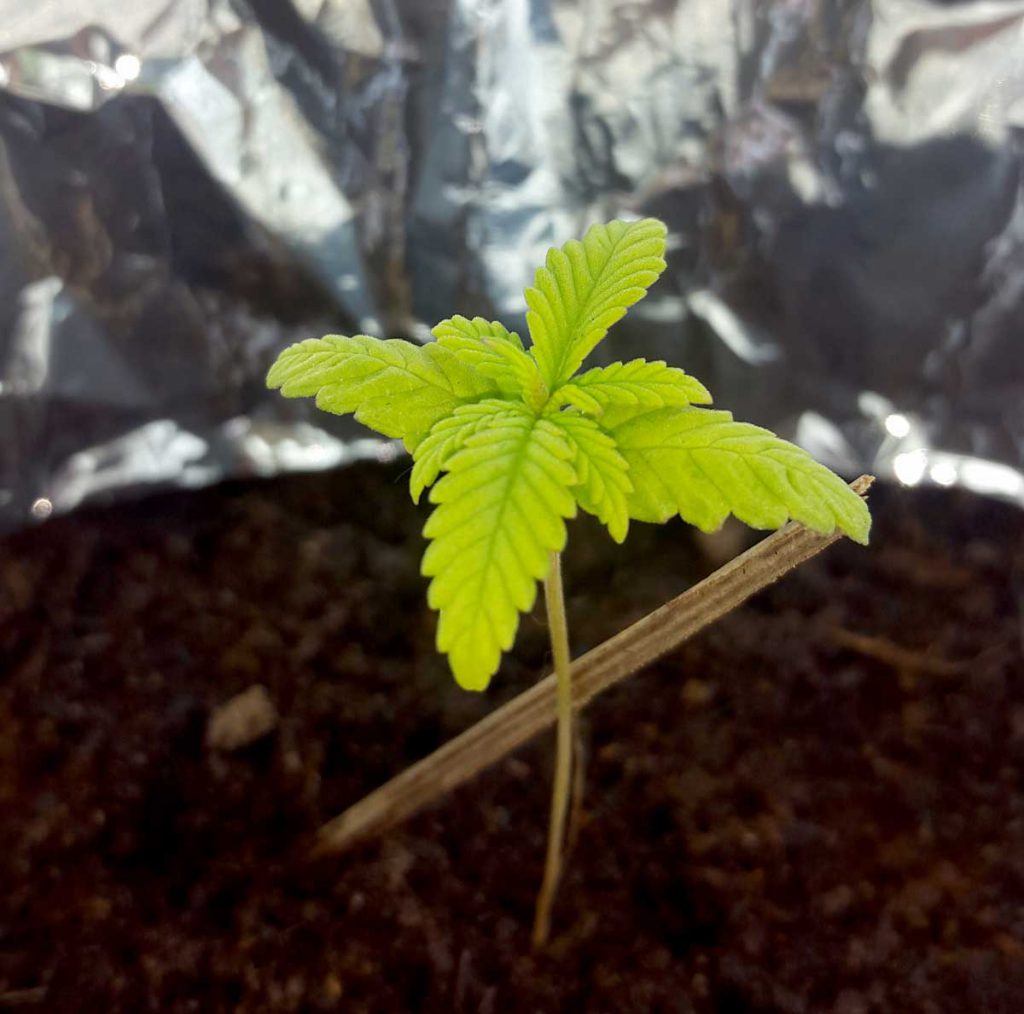
When cannabis sprouts are overwatered, the roots will start drowning. As a result, adequate oxygen will not be absorbed and growth will not be facilitated resulting in the yellowing of leaves. The roots can also dry out because of lack of enough water and the seedlings will turn yellow and wilt. If your sprout grows skinny and tall, but leaves turn yellow, then it is a sign of lack of enough light and upgrading your lighting is necessary.
Common Causes of Cannabis Leaves Turning Yellow
Chlorosis is simply a technical term for the yellowing of leaves and mainly occurs due to a lack of chlorophyll in the leaves. Many factors can cause the yellowing of leaves in cannabis plants. Sometimes yellowing of leaves is natural, while other times it is your plant trying to show you it is having problems.
When marijuana leaves turn yellow, it does not mean they will die as there are remedies that can be used to completely stop this phenomenon. As a result, your marijuana plants will continue growing healthier and stronger. The yellowing of marijuana leaves can be caused by any of the following:
Overwatering
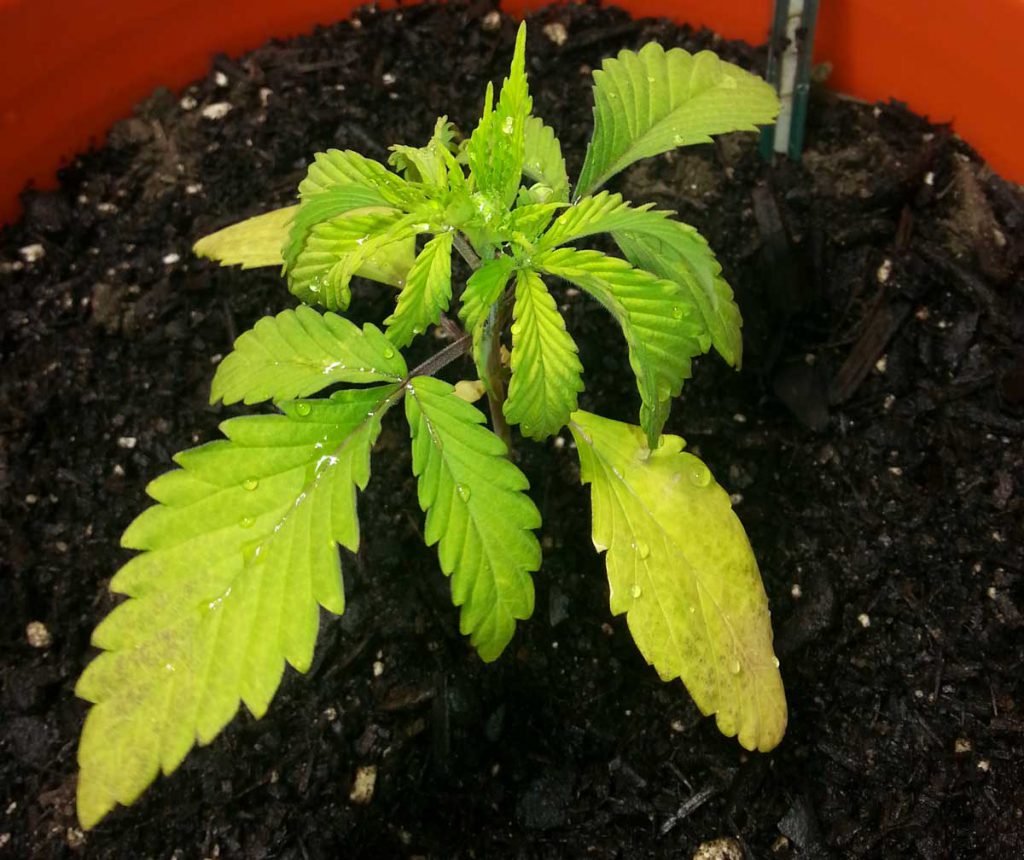
Overwatering is a common problem, particularly for novice marijuana cultivators. In a bid to meet all the needs of the plant some growers may end up overdoing things. As a result, growers may end up drowning their cannabis plants unknowingly. Overwatering tends to saturate the soil causing a reduction of oxygen levels, which eventually starves the roots.
Marijuana plants utilize roots for the uptake of nutrients from the soil. When the roots start dying off, the plants will have access to fewer nutrients resulting in deficiencies. The yellowing of leaves is common when cannabis plants are not getting the nutrients and mineral elements that they require to thrive.
Fixing Overwatering:
Solving overwatering is simple. You can avoid over watering by ensuring that you plants only get enough water every day. Cannabis requires less water to grow than most growers think. Before you water your marijuana plants, it is advisable that you give the topsoil time to dry. You can verify this by using your fingers or pushing a skewer into the growing soil.
Underwatering
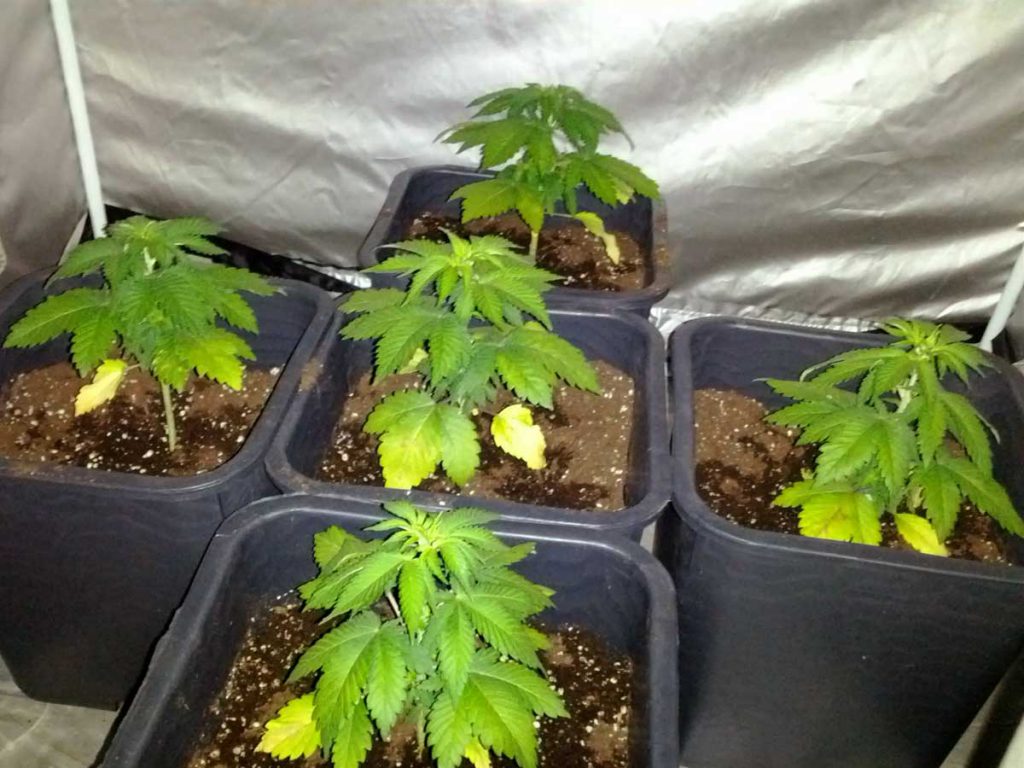
Underwater is also another cause of marijuana leaves yellowing. If your plants do not get enough water, they will develop yellow leaves. During transpiration, water potential is used in pulling up water into the leaves and stem. Water is also crucial during photosynthesis as it helps in the production of energy. This is the reason why leaves start wilting and turning yellow when water is missing.
When marijuana leaves do not get enough water, the tip of the leaves will curl downward developing a claw shape. Over time, the leaves will keel over and die if the marijuana growers do not intervene.
Fixing Chronic Underwatering Problem:
For chronic underwatering of cannabis plants, you just need to water your plants. Be sure to follow the recommended guidelines for watering your plants by allowing the top inch of the soil to completely dry out. Remember that diagnosing chronic underwatering is a challenge because this problem may just look like most nutrient deficiencies. However, your main clue will be your cannabis plants perking up whenever you water them.
Be sure to monitor the post-feeding behavior of your cannabis plants. You can prevent recurrence by using a humidity meter to accurately gauge when you should water your plants. Excessive water can cause root rot, while very little water can result in stunt growth.
pH Imbalance
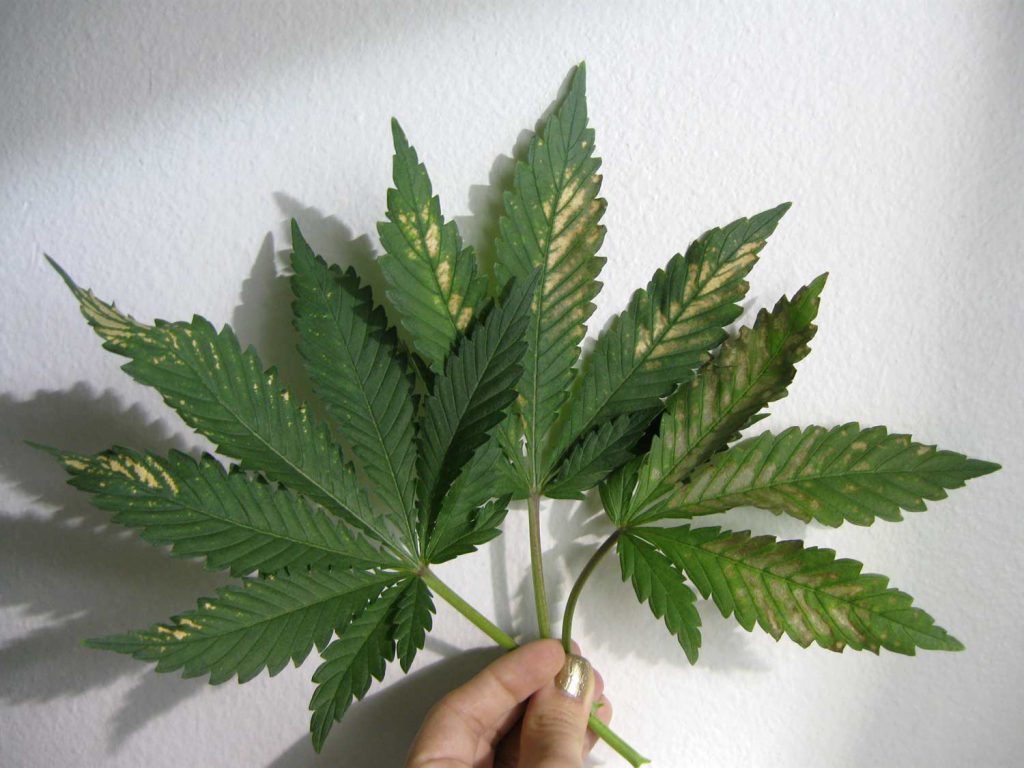
Another common cause of yellowing of cannabis leaves is pH that is too low or too high. pH is simply the measurement of alkalinity or acidity of a liquid and it is determined by the level of hydrogen ions in the water. When the pH levels are off, cannabis plants tend to have challenges absorbing nutrients from the soil even when they are present close to the roots.
In general, the pH for water is 7.0 and this pH changes when you add nutrients to it. This is why you must be cautious of the pH of water that you are feeding your cannabis plants with. Growers can get the best yield and results from marijuana grown in soil that maintains a pH of about 5.8 to 6.0.
Fixing pH Imbalance:
Cannabis growers need to use a pH level measuring kit or pen to monitor the acidity levels of what they are feeding their cannabis plants. If the levels are not close to the optimum range, you can add an acid or base to lower or raise the pH levels.
Light Burn
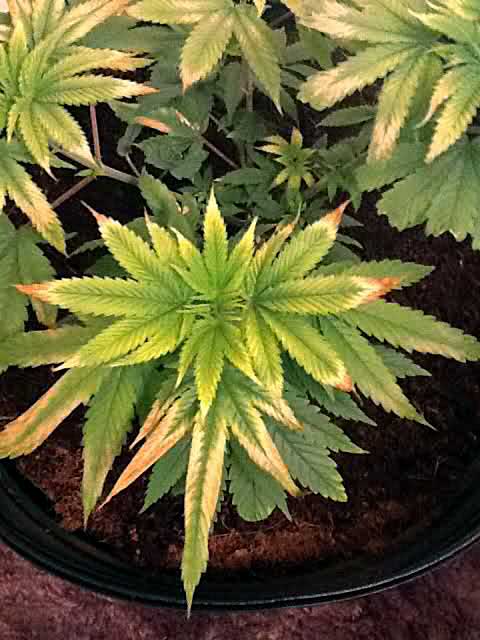
If the top of your cannabis plants are turning crispy, yellow, and curling up or down, then one cause can be light burn. In most cases, leaves closer to the lighting sources usually show severe symptoms. This is because excessive heat tends to fry the cannabis leaves causing massive damage to them. High-intensity and powerful lights like LEDs tend to cause light burn because they produce the least amount of heat.
How to Fix:
If your hand feels uncomfortably hot where the light hits the cannabis leaves, then it means the leaves also feel the burn. The best way to fix light burn is by moving the grow lights further away by a few inches. The optimal range between the plants and grow lights is usually 1 to 2 feet.
You can also bend over all affected cannabis plants to ensure they are further away from the light source. Ensure that the temperature at the uppermost leaves of the cannabis plants does not exceed 30 degrees Celsius or 86°F.
Read next: How Many Watts Per Square Foot for Led Grow Lights
Heat Stress or Cold Shock (Temperature Problems)
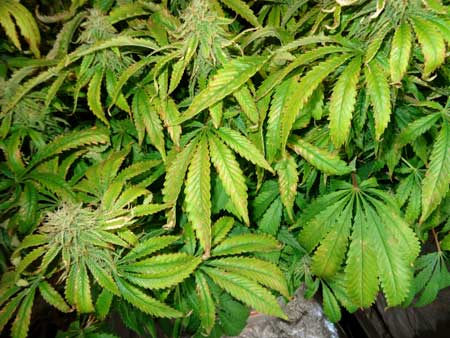
Extreme temperatures can also cause the yellowing of cannabis leaves. Heat can affect the growth of pot plants and is usually caused by grow lights or poor circulation of air in the grow room. If you are cultivating your marijuana plants outside or in the basement, a cold spell during the night could also damage your plants.
When marijuana plants experience heat stress, the leaves usually turn yellow and they dry up. On the other hand, cold shocks cause the leaves to droop and eventually turn yellow. Either temperature extremes can kill your cannabis plants very fast.
Most indoor cannabis growers tend to struggle with heat rather than cold. When temperatures are below 10°C or 50°F, they can cause the leaves to become yellow and pale. Some marijuana plants can even die when the temperatures hit the freezing point.
How to Fix Temperature Problems:
You can use your hands to carry out the hand test where you hold the cannabis plants to ensure they are not extremely hot. If the surface feels too hot, then you should move the light up and away from the plants. You should also regulate the temperatures if they are above 85°F during the day or below 60°F at night.
You must also ensure that the grow space has good air circulation as it prevents hot spots. In addition, good air circulation will keep temperatures balanced through the whole room and aid the exchange of oxygen and CO2. If you are using grow containers, you must ensure they are placed on raised ground because putting them directly on the concrete floor can kill them overnight because of low temperatures. If your plants are outdoors, you can cover the plant roots at night to keep them warm.
Nutrient Deficiency
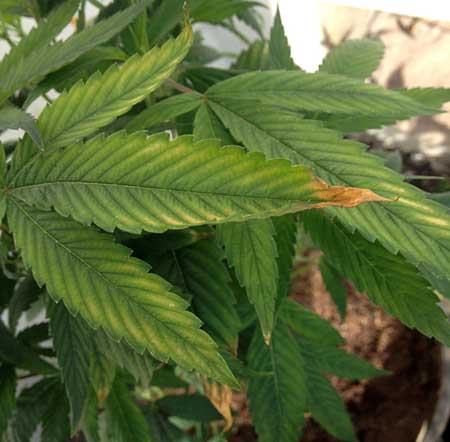
If your cannabis plants are watered correctly and the pH is okay, then the problem may be a lack of nutrients. For the yellowing of leaves, the culprits are usually nitrogen, phosphorus, iron, magnesium, zinc, sulfur, and potassium. Be sure to check the location of the yellowing on your cannabis plants and leaves. This will give you clues to help you know the nutrients that are lacking.
How to Fix Nutritional Deficiencies
Cannabis growers can stop the yellowing of leaves caused by a lack of nutrients by using fertilizers designed specifically for cannabis plants. You can avoid deficiencies by finding a fertilizer that contains all essential micro and macronutrients that cannabis plants need. Even though the nutritional needs of cannabis vary based on the strain, having these baseline nutrients will protect your plants from nutrient deficiencies.
Using excessive fertilizer can also cause issues that can result in the yellowing of cannabis leaves. However, this can be fixed by simply flushing the soil with water to eliminate nutrient buildup in the soil.
Read next: Best Bloom Boosters Nutrients for Marijuana Growth
When are Yellow Cannabis Leaves Considered Natural
When cannabis seedlings are growing, the cotyledons are usually the first leaves to appear. As the seedling grows, the cotyledons will yellow and fall off. Cannabis leaves that are not getting adequate light will also start yellowing. These leaves should be removed if you are unable to find a way of penetrating light to these leaves. During the cannabis growing process, you may notice isolated yellow leaves that can be caused by the accidental snapping of leaves by the grower and this is normal.
In the last weeks of flowering, some cannabis leaves can naturally turn yellow as the plants reach the final phase of life. This occurs because the plants are more focused on reproduction and gathering nutrient resources into flowers or seeds.
In Conclusion
Whether you are a pot veteran or new grower, cultivating your own pot can be quite a rewarding and enjoyable experience. However, it can be nerve-wrecking when the bright green leaves turn yellow and pale. However, as a grower, you should never panic or worry when you see your marijuana plants having yellow leaves.
The yellowing of leaves does not always mean your marijuana plants will die or wither away. In some cases, the yellowing of cannabis leaves can be a natural phenomenon or can be unintentionally caused by marijuana growers. Remember that cannabis leaves can turn yellow for no specific reason and may cause no harm to the plants.
If you notice your marijuana leaves are turning yellow, ensure that you determine the underlying problem. Addressing the problem can save your cannabis plants from complete ruin. Be sure to apply the above tips to help you stop yellowing of marijuana leaves before it eliminates your plants.
Read next: Common Cannabis Seedling Problems


